
This resource provides a prompt for every school day that could be used to inspire students to express themselves in the language through speaking and/or writing
- Subject:
- Spanish
- World Languages
- Material Type:
- Activity/Lab
- Date Added:
- 02/11/2020

This resource provides a prompt for every school day that could be used to inspire students to express themselves in the language through speaking and/or writing

This resource provides a prompt for every school day that could be used to inspire students to express themselves in the language through speaking and/or writing

This resource provides a prompt for every school day that could be used to inspire students to express themselves in the language through speaking and/or writing

This resource provides a prompt for every school day that could be used to inspire students to express themselves in the language through speaking and/or writing

This list of 20 simple Spanish conversation starters can be used to spark conversation from novice to advanced speakers of the language.
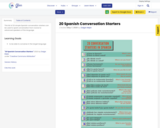
This list of 20 simple Spanish conversation starters can be used to spark conversation from novice to advanced speakers of the language.
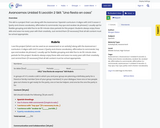
This skit is a project that I use along with the Avancemos 1 Spanish curriculum. It aligns with Unit 5 Lesson 2 (party and chores vocabulary, affirmative tú commands, hay que and acabar de phrases). I usually opt for flexible grouping and allot five to six 55-minute class periods for this project. Students always enjoy these skits and wow me every year with their creativity. Just remind them (if necessary) that all skit content must be school appropriate.
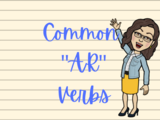
A simple and clear compilation of common use "AR" verbs in Spanish I & II use along with the attach Quizlet card set or by itself. There is also and accompanying teacher guide with all the answers.
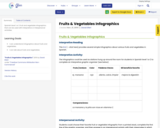
Spanish level 1 or 2 fruit and vegetable infographics that can be used with interpretive or interpersonal activities.

Large class circle game for sequencing (colors, numbers, etc.)
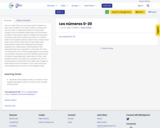
This is a video that you can show level 1 students to learn the numbers 0-20. Each number is introduced one at a time, in order and shown in a real world context to show students where they may find those numbers if they were in Spain.
Students can be given a handout with the numbers (as words in a random order) and students need to write in the numeric value next to the word as they hear it in the video.
After watching the video and reviewing the numbers, students can create basic math problems with responses that are no greater in value than 20. They can write them out in words, swap papers and answer one anothers.
Students can also verbally practice the numbers by quizzing their classmates on their math problems aloud.
As a follow up, students can work in small groups to create their own video with images of where they find the numbers 0-20 in their every day world, following the structure of the original video.
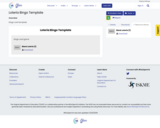
bingo card templateTeachers can fill in the word document with vocabulary words in the target language then use a variety of ways to call out the words. Some examples would be to give definitions, say the word in English or use a sentenceStudents can play a number of rounds by marking the squares using 3D markers or simply marking them off using a writing utensil

Create a fake social media page for a teacher in Spanish that students will then learn how to protect their information through playing an online simulation game.

Compare how computer memory and cache memory works by conducting a survey with various data collection methods to create a scatterplot.
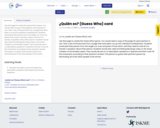
Use this page to create the Guess Who? game. You would need a copy of the page for each partner to use. Then a set of the pictures from a page that have been cut up into individual cards/photos. Students would pick their person from the single cut-outs and place it face down until they need to look at it to answer a question about their person. Students would also need something like bingo chips or dry erase markers on laminated copies. They would ask yes or no description questions in Spanish and then mark off the characters according to their partner's answer. First person to guess their partner's person by eliminating all of the other people is the winner.

How to use this activity:Print the ready form and provide students the link or the site SER + ADJECTIVES ( https://quizlet.com/_8wuh8u?x=1jqt&i=1q3v0l)

SERI found "SER" to be one of the most difficult things for students to remember. However, this mnemonic has become one of my most popular lessons. Students remember and use them all the time after they have learned it this way.The first form is your teacher notes with all the answers. It will help you lead them and understand the lesson. The second one is the student form they would fill it in as you lead them in. Normally, after I present this lesson. I ask students to write sentences about them using all the functions of “SER”. Then about their parents. I modeled on myself first. Then I ask them to come to the front of the class and read their examples.

This is a popular Mexican board game that can be printed and played in groups to review any material.
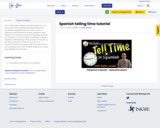
This tutorial helps students tell time in Spanish. It is a direct lesson that explicitly teaches phrases and vocabulary needed to tell time. There is also an opportunity for students to answer questions while viewing.
You may want to put some guiding questions on the board or on an exit slip, for example, to gauge students understanding of the concept.
1) How do you ask "What time is it?"
2) How do you say "It is ___ o'clock"?
3) What is one way to say 12 o'clock?
4) How do you specify AM vs. PM?
5) What makes the 1 o'clock hour different than the rest?